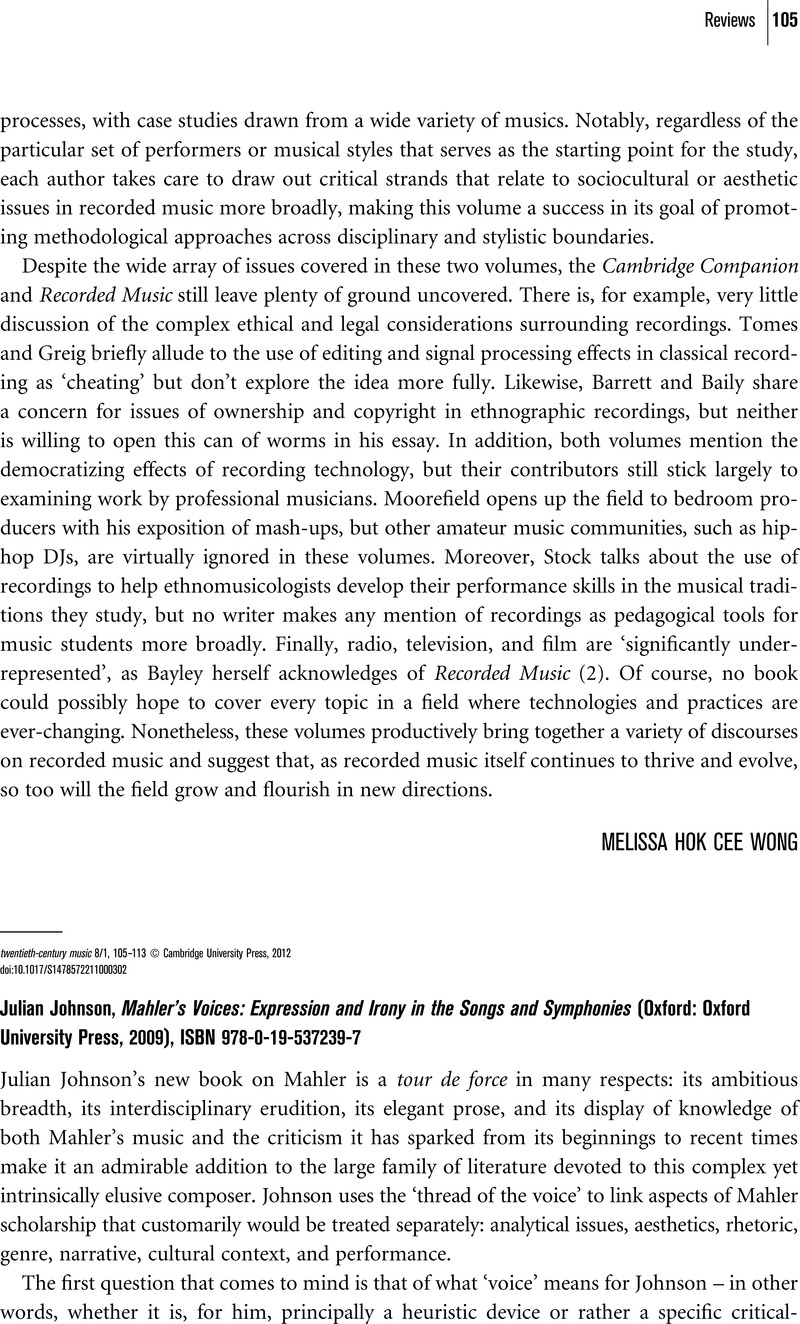No CrossRef data available.
Published online by Cambridge University Press: 23 February 2012

1 Booth, Wayne C., The Rhetoric of Fiction (Chicago and London: University of Chicago Press, 1961), esp. Chapter 7, pp. 169–209Google Scholar.
2 Genette, Gérard, Narrative Discourse: an Essay in Method, trans. Lewin, Jane E. (Ithaca, NY: Cornell University Press, 1980), 213Google Scholar.
3 For definitions of dialogism and the polyphonic novel see, for example, Bakhtin, Mikhail, Problems of Dostoevsky's Poetics, ed. and trans. Emerson, Caryl (Minneapolis: University of Minnesota Press, 1984), 6–7, 16–17CrossRefGoogle Scholar; for heteroglossia see The Dialogic Imagination: Four Essays, ed. Michael Holquist and trans. Caryl Emerson and Michael Holquist (Austin: University of Texas Press, 1981), especially 263.
4 Cone, Edward T., The Composer's Voice (Berkeley and Los Angeles: University of California Press, 1974), 78–9Google Scholar.
5 See Kerman, Joseph, The Beethoven Quartets (New York: W. W. Norton, 1979)Google Scholar. In Chapter 7, entitled ‘Voice’, Kerman suggests that ‘the [last] five quartets and the Great Fugue […] are drenched in evocations of the human voice’ (195).
6 Abbate, Carolyn, Unsung Voices: Opera and Musical Narrative in the Nineteenth Century (Princeton: Princeton University Press, 1991), 29CrossRefGoogle Scholar. Abbate cites Kerman as a precursor for her own work (19).
7 Adorno, Theodor W., Mahler: a Musical Physiognomy, trans. Jephcott, Edmund (Chicago: Chicago University Press, 1982), 61Google Scholar.
8 Knapp, Raymond, Symphonic Metamorphoses: Subjectivity and Alienation in Mahler's Re-cycled Songs (Middletown, CT: Wesleyan University Press, 2003), 131Google Scholar.
9 The formulation ‘als ob’, as Johnson points out (297), was first used in connection with Mahler's music by Hans Redlich and subsequently taken up by Heinrich Eggebrecht, Hans in Die Musik Gustav Mahlers (Munich: Piper, 1986)Google Scholar and by Danuser, Hermann in Gustav Mahler und seine Zeit (Laaber: Laaber-Verlag, 1991)Google Scholar.
10 Morgan, Robert P., ‘Ives and Mahler: Mutual Responses at the End of an Era’, 19th-Century Music 2/1 (1978), 72–81.CrossRefGoogle Scholar